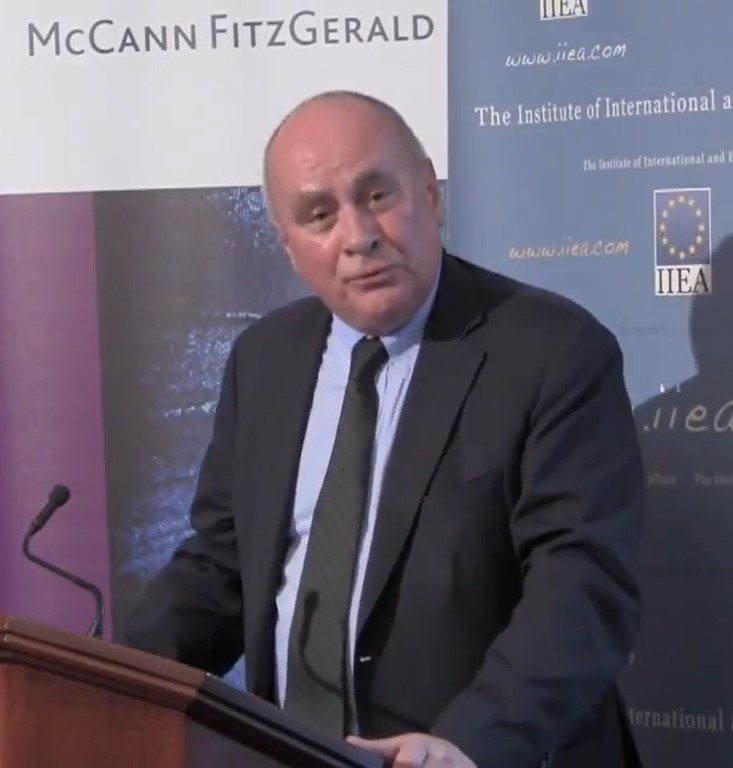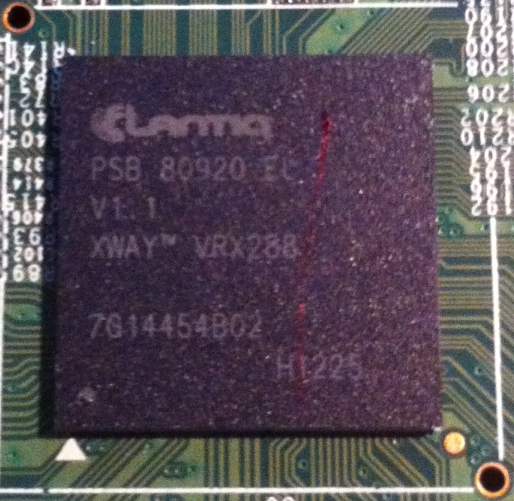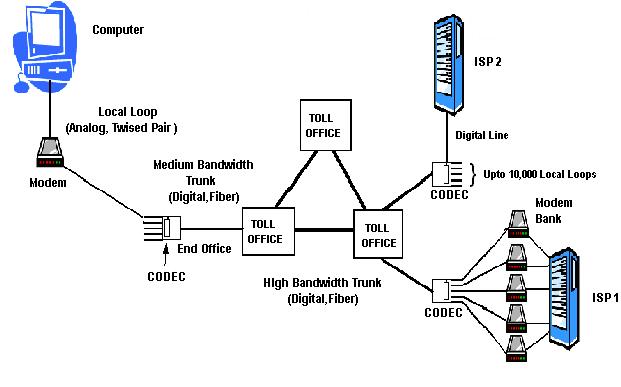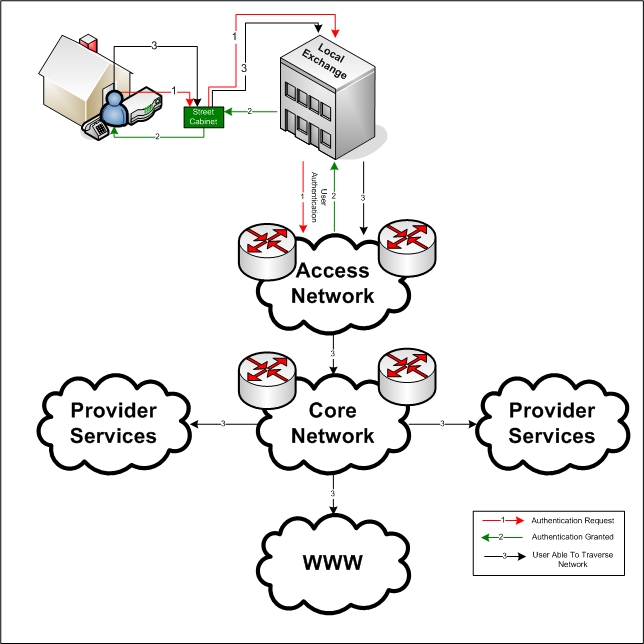|
21CN
The 21st Century Network (21CN) programme is the data and voice network transformation project, under way since 2004, of the UK telecommunications company BT Group plc. It was intended to move BT's telephone network from the AXE telephone exchange, AXE/System X (telephony), System X Public Switched Telephone Network (PSTN) to an Internet Protocol (IP) system. As well as switching over the PSTN, BT planned to deliver many additional services over their new data network, such as on-demand interactive TV services. BT originally stated that it would accrue annual savings of £1 billion when the transition to the new network was completed, and hoped to have over 50% of its customers transferred by 2008 (see #External links, ''External links'' below for current progress on the roll-out of optical fibre by Openreach). Capital expenditure was put at £10 billion over five years, this being 75% of BT's total capital spending plans in that period. Architecture The new network is based ... [...More Info...] [...Related Items...] OR: [Wikipedia] [Google] [Baidu] |
BT Group Plc
BT Group plc (formerly British Telecom) is a British Multinational corporation, multinational telecommunications holding company headquartered in London, England. It has operations in around 180 countries and is the largest provider of fixed-line, Internet access, broadband and Mobile telephony, mobile services in the UK, and also provides subscription television and Information technology, IT services. BT's origins date back to the founding in 1846 of the Electric Telegraph Company, the world's first public telegraph company, which developed a nationwide communications network. BT Group as it came to be started in 1912, when the General Post Office, a government department, took over the system of the National Telephone Company becoming the monopoly telecoms supplier in the United Kingdom. The Post Office Act of 1969 led to the GPO becoming a public corporation, Post Office Telecommunications. The ''British Telecom'' brand was introduced in 1980, and became independent of the R ... [...More Info...] [...Related Items...] OR: [Wikipedia] [Google] [Baidu] |
System X (telephony)
System X is the digital switching system installed in almost all telephone exchanges throughout the United Kingdom, from 1980 onwards. History Development System X was developed by Post Office Telecommunications (later to become British Telecom), GEC, Plessey, and Standard Telephones and Cables (STC), and was first shown in public in 1979 at the Telecom 79 exhibition in Geneva, Switzerland. STC withdrew from the project in 1982. In 1988, the telecommunications divisions of GEC and Plessey merged to form GPT, with Plessey subsequently being bought out by GEC and Siemens. In the late 1990s, GEC acquired Siemens' 40% stake in GPT. GEC renamed itself Marconi in 1999. When Marconi was sold to Ericsson in January 2006, Telent plc retained System X and continues to support and develop it as part of its UK services business. Implementation The first System X unit to enter public service, in September 1980, was installed in Baynard House, London and was a 'tandem junction unit ... [...More Info...] [...Related Items...] OR: [Wikipedia] [Google] [Baidu] |
Multiprotocol Label Switching
Multiprotocol Label Switching (MPLS) is a routing technique in telecommunications networks that directs data from one node to the next based on labels rather than network addresses. Whereas network addresses identify endpoints, the labels identify established paths between endpoints. MPLS can encapsulate packets of various network protocols, hence the ''multiprotocol'' component of the name. MPLS supports a range of access technologies, including T1/ E1, ATM, Frame Relay, and DSL. Role and functioning In an MPLS network, labels are assigned to data packets. Packet-forwarding decisions are made solely on the contents of this label, without the need to examine the packet itself. This allows one to create end-to-end circuits across any type of transport medium, using any protocol. The primary benefit is to eliminate dependence on a particular OSI model data link layer (layer 2) technology, and eliminate the need for multiple layer-2 networks to satisfy different types of tra ... [...More Info...] [...Related Items...] OR: [Wikipedia] [Google] [Baidu] |
Ofcom
The Office of Communications, commonly known as Ofcom, is the government-approved regulatory and competition authority for the broadcasting, internet, telecommunications and mail, postal industries of the United Kingdom. Ofcom has wide-ranging powers across the television, radio, telecoms, internet and postal sectors. It has a statutory duty to represent the interests of citizens and consumers by promoting competition and protecting the public from harmful or offensive material. Some of the main areas Ofcom regulates are TV and radio standards, broadband and phones, video-sharing platforms online, the wireless spectrum and postal services. The regulator was initially established by the (c. 11) and received its full authority from the Communications Act 2003 (c. 21). History On 20 June 2001, the Queen's Speech to the Parliament of the United Kingdom, UK Parliament announced the creation of Ofcom. The new body, which was to replace several existing authorities, was concei ... [...More Info...] [...Related Items...] OR: [Wikipedia] [Google] [Baidu] |
VDSL2
Very high-speed digital subscriber line (VDSL) and very high-speed digital subscriber line 2 (VDSL2) are digital subscriber line (DSL) technologies providing data transmission faster than the earlier standards of asymmetric digital subscriber line (ADSL) G.992.1, G.992.3 (ADSL2) and G.992.5 (ADSL2+). VDSL offers speeds of up to 52 Mbit/s downstream and 16 Mbit/s upstream, over a single twisted pair of copper wires using the frequency band from 25 kHz to 12 MHz. These rates mean that VDSL is capable of supporting applications such as high-definition television, as well as telephone services (voice over IP) and general Internet access, over a single connection. VDSL is deployed over existing wiring used for analog telephone service and lower-speed DSL connections. This standard was approved by the International Telecommunication Union (ITU) in November 2001. Second-generation systems (VDSL2; ITU-T G.993.2 approved in February 2006) use frequencies of up ... [...More Info...] [...Related Items...] OR: [Wikipedia] [Google] [Baidu] |
Characteristic Impedance
The characteristic impedance or surge impedance (usually written Z0) of a uniform transmission line is the ratio of the amplitudes of voltage and current of a wave travelling in one direction along the line in the absence of reflections in the other direction. Equivalently, it can be defined as the input impedance of a transmission line when its length is infinite. Characteristic impedance is determined by the geometry and materials of the transmission line and, for a uniform line, is not dependent on its length. The SI unit of characteristic impedance is the ohm. The characteristic impedance of a lossless transmission line is purely real, with no reactive component (see below). Energy supplied by a source at one end of such a line is transmitted through the line without being dissipated in the line itself. A transmission line of finite length (lossless or lossy) that is terminated at one end with an impedance equal to the characteristic impedance appears to the sourc ... [...More Info...] [...Related Items...] OR: [Wikipedia] [Google] [Baidu] |
Signal Reflection
In telecommunications, signal reflection happens when a signal is transmitted along a transmission medium (such as a copper cable or an optical fiber) and part of it is reflected back toward the source instead of reaching the end. This reflection is caused by imperfections or physical variations in the cable (such as abrupt changes in its geometry) that lead to impedance mismatches. These mismatches disrupt the signal and cause some of it to bounce back. In radio frequency (RF) systems, this is typically measured using the voltage standing wave ratio (VSWR), with device called a VSWR bridge. The amount of reflected energy depends on the degree of impedance mismatch and is mathematically describe by the reflection coefficient. Because the principles are the same, this concept is perhaps easiest to understand when considering an optical fiber. Imperfections in the glass create mirrors that reflect the light back along the fiber. Impedance discontinuities cause attenuation, attenu ... [...More Info...] [...Related Items...] OR: [Wikipedia] [Google] [Baidu] |
Wire Gauge
Wire gauge is a measurement of wire diameter. This determines the amount of electric current the wire can safely carry, as well as its electrical resistance and weight. Types of wire gauge Wire gauges may be broadly divided into two groups, the empirical and the geometric progression, geometric. The first includes all the older gauge measurements, notably the Birmingham gauge (B.W.G. or Stubs) and the Lancashire. The origin of the B.W.G. is obscure. The numbers of wire were in common use earlier than 1735 when the measurements were officially defined. It is believed that they originally were based on the series of drawn wires, No. 1 being the original rod, and succeeding numbers corresponding with each draw, so that No. 10, for example, would have passed ten times through the draw plate. But the Birmingham and the Lancashire gauges, the latter being based on an averaging of the dimensions collated from a large number of the former in the possession of Peter Stubs of Warrington ... [...More Info...] [...Related Items...] OR: [Wikipedia] [Google] [Baidu] |
MSAN
A multi-service access node (MSAN), also known as a multi-service access gateway (MSAG), is a device typically installed in a telephone exchange (although sometimes in a roadside serving area interface cabinet) which connects customers' telephone lines to the core network, to provide telephone, ISDN, and broadband such as DSL all from a single platform. Prior to the deployment of MSANs, telecom providers typically had a multitude of separate equipment including DSLAMs to provide the various types of services to customers. Integrating all services on a single node, which typically backhauls all data streams over IP or Asynchronous Transfer Mode can be more cost effective and may provide new services to customers more quickly than previously possible. A typical outdoor MSAN cabinet consists of narrowband ( POTS), broadband ( xDSL) services, batteries with rectifiers, optical transmission unit and copper distribution frame In telecommunications, a distribution frame is a passiv ... [...More Info...] [...Related Items...] OR: [Wikipedia] [Google] [Baidu] |
Local Loop
In telephony, the local loop (also referred to as the local tail, subscriber line, or in the aggregate as the last mile) is the physical link or circuit that connects from the demarcation point of the customer premises to the edge of the common carrier or telecommunications service provider's network. At the edge of the carrier access network in a traditional public telephone network, the local loop terminates in a circuit switch housed in an incumbent local exchange carrier or telephone exchange. Infrastructure Traditionally, the local loop was an electrical circuit in the form of a single pair of conductors from the telephone on the customer's premises to the local telephone exchange. Single-wire earth return lines had been used in some countries until the introduction of electric tramways from the 1900s made them unusable. Historically the first section was often an aerial open-wire line, with several conductors attached to porcelain insulators on cross-arms on "te ... [...More Info...] [...Related Items...] OR: [Wikipedia] [Google] [Baidu] |
Access Network
An access network is a type of telecommunications telecommunications network, network which connects subscribers to their immediate telecommunications service provider, service provider. It is contrasted with the core network, which connects local providers to one another. The access network may be further divided between feeder plant or distribution network, and drop plant or edge network. Telephone heritage An access network, also referred to as an outside plant, refers to the series of wires, cables and equipment lying between a consumer/business telephone termination point (the point at which a telephone connection reaches the customer) and the local telephone exchange. The local exchange contains banks of automated switching equipment which direct a call or connection to the consumer. The access network is perhaps one of the oldest assets a telecoms operator would own. In 2007–2008 many telecommunication operators experienced increasing problems maintaining the quality ... [...More Info...] [...Related Items...] OR: [Wikipedia] [Google] [Baidu] |
IPstream
BT Wholesale and Ventures was a division of United Kingdom telecommunications company BT Group that provided voice, broadband, data, hosted communication, managed network and IT services to communications providers (CPs) in Great Britain. It was merged with BT's Business and Public Sector division to form BT Enterprise in October 2018. Wholesale and Ventures provided services to BT's other divisions: BT Consumer, BT Business and Public Sector and EE. It also offered services to media companies and broadcasters, and its ventures side offered a range of products and services. It provided the voice services to UK customers via 999, 118 500 and Next Generation Text Service, which helps those who can’t hear or speak on the phone. In April 2018, Gavin Patterson, then BT Group's CEO, announced Wholesale and Ventures was to be combined with the group's Business and Public Sector division into a newly-formed division, BT Enterprise. It came after BT's decision to undertake a stream ... [...More Info...] [...Related Items...] OR: [Wikipedia] [Google] [Baidu] |





